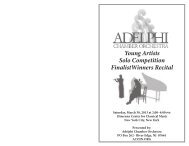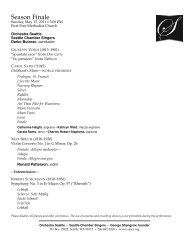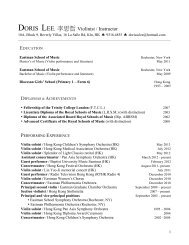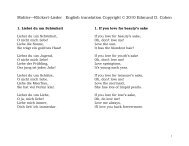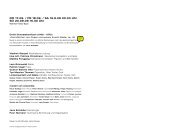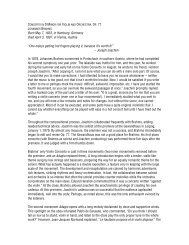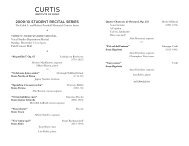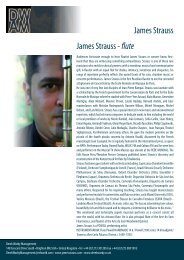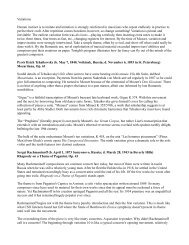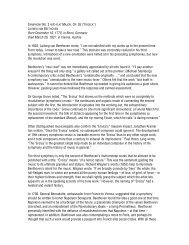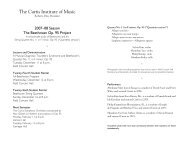Der fliegende Holländer - InstantEncore
Der fliegende Holländer - InstantEncore
Der fliegende Holländer - InstantEncore
Create successful ePaper yourself
Turn your PDF publications into a flip-book with our unique Google optimized e-Paper software.
18 London Lyric Opera<br />
The ‘Artwork of the Future’<br />
by Roger Allen<br />
The opening bars of the Overture to <strong>Der</strong><br />
<strong>fliegende</strong> <strong>Holländer</strong> plunge with sudden<br />
and overwhelming force into the elemental<br />
world of the supernatural. Indeed, even<br />
after a century and a half of familiarity<br />
through exposure as a curtain raiser to<br />
countless symphony concerts, this musical<br />
bolt of lightning never loses its power to<br />
shock. The horn call motif representing the<br />
eponymous central figure of the Dutchman<br />
introduces an overture that is more than<br />
the conventional potpourri of themes from<br />
the opera in the manner of the time: it is<br />
a broadly executed symphonic poem that<br />
is shaped as if by the force of nature itself.<br />
The rasping open fifths and the strident<br />
sound of the four horns (two valve horns<br />
and two natural horns supported in the<br />
bass by the almost obsolete ophikleide<br />
in the original orchestration of 1841) may<br />
almost be said to be the direct obverse<br />
to the mysterious opening of Beethoven’s<br />
Ninth Symphony – a work much in<br />
Wagner’s mind at the time of composition.<br />
Tradition and innovation<br />
The significance of <strong>Der</strong> <strong>fliegende</strong> <strong>Holländer</strong><br />
in Wagner’s operatic output is the new life<br />
it gives to the old-fashioned number opera<br />
whilst to a certain extent anticipating the<br />
musical continuity of the later works. The<br />
opera is still divided into discrete numbers,<br />
i.e. the Sailors’ Songs, the Dutchman’s<br />
first act monologue, Senta’s Ballade,<br />
Erik’s narration etc but these numbers are<br />
shaped so that they flow naturally into one<br />
another. The two characters central to the<br />
dramatic and musical scheme of the opera<br />
are the eponymous Dutchman and Senta.<br />
Unsurprisingly, it is these two figures that<br />
the young Wagner is most successful in<br />
characterising musically. The Dutchman’s<br />
arrival on land and subsequent account of<br />
his tormented oceanic wanderings and<br />
longing for oblivion is given dramatic<br />
meaning by music first heard in the<br />
overture and now associated with this<br />
ancient mariner’s timeless voyaging.<br />
The motivic fragment accompanying the<br />
Dutchman’s opening recit (‘Die Frist ist<br />
um’) is proof that even at this early stage in<br />
the development of his musical language,<br />
Wagner has the ability to concentrate a<br />
world of dramatic meaning into a short<br />
but telling musical phrase. The following<br />
‘aria’ (‘Wie oft in Meeres tiefsten Schlund’)<br />
is the first of Wagner’s great dramatic<br />
monologues where the internal torment<br />
of the protagonist is realised in music<br />
of enormous power and intensity. This<br />
Dutchman is the precursor of the<br />
anguished Wotan in Act II of Die Walküre<br />
and the pain-racked Amfortas in Parsifal.<br />
It is no exaggeration to suggest that many<br />
of the musical tropes Wagner developed<br />
in his later works are present in <strong>Holländer</strong>.<br />
LLO Dutchman_aw.indd 18 18/11/08 15:09:23



